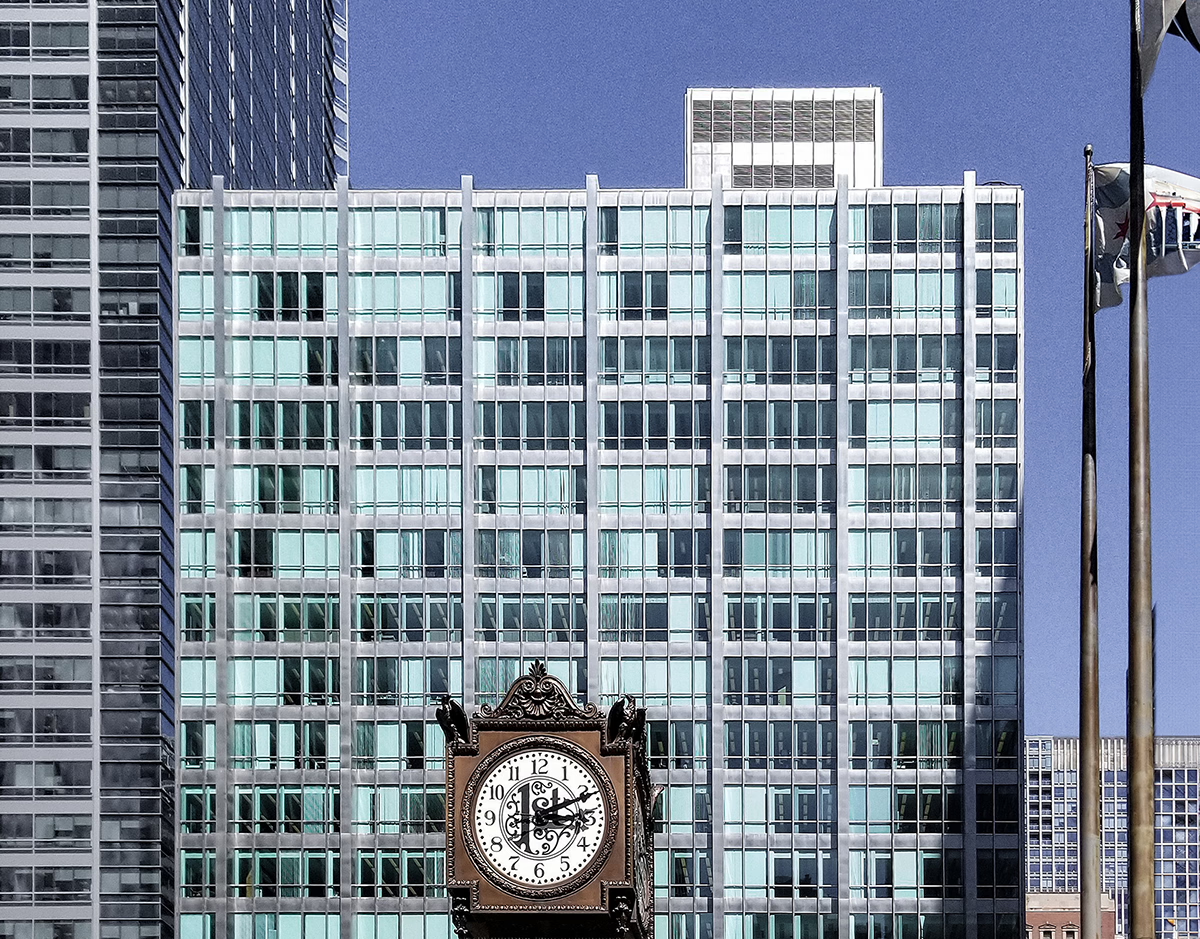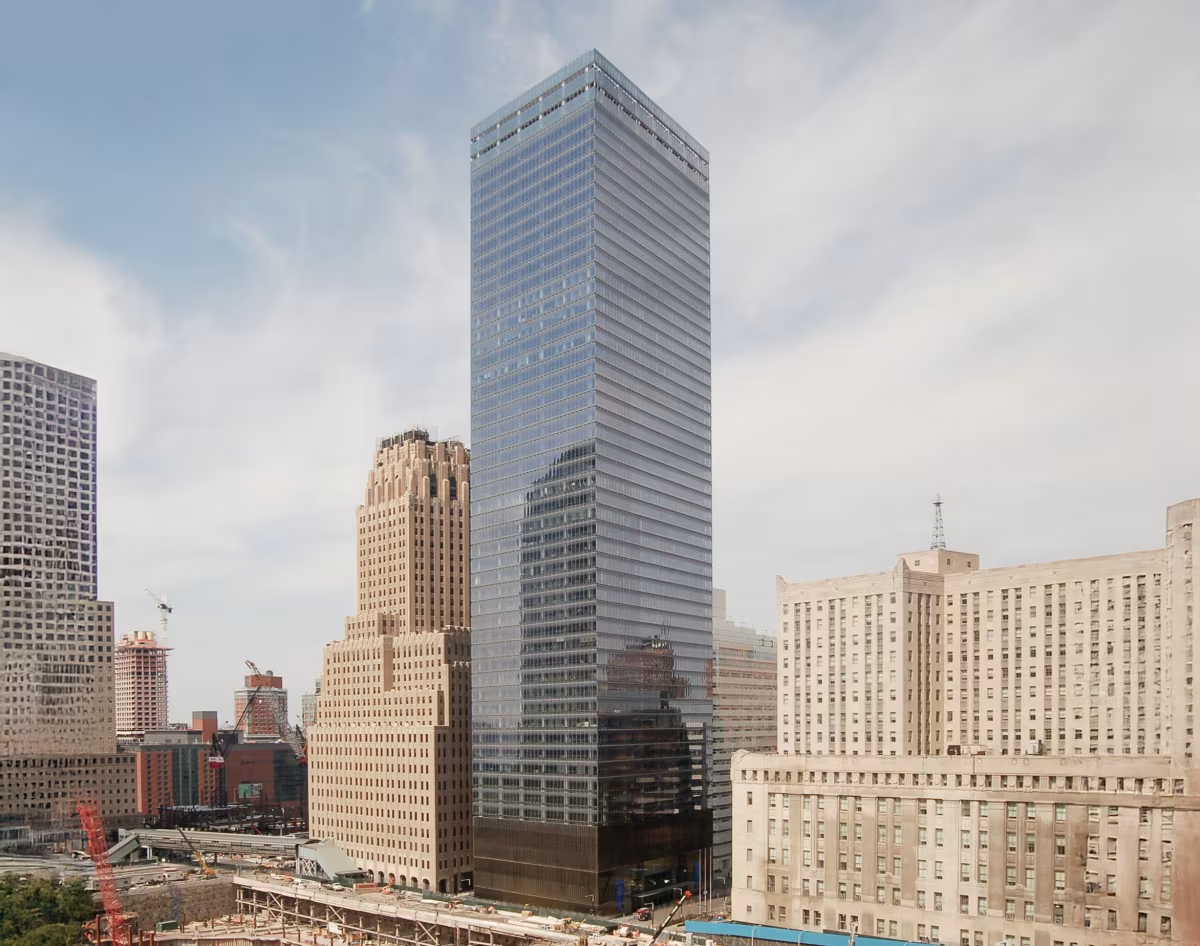Inland Steel Building vs 7 World Trade Center


Comparing the Inland Steel Building and the 7 World Trade Center is compelling because they were both designed by Skidmore, Owings & Merrill, yet they stand in different cities (Chicago, IL and New York, NY), and were completed over two decades apart.
What this will allow us to see, is how the same firm's approach adapted to different places in different periods of time.
Height & Size
The 7 World Trade Center is clearly the larger tower of the two, both in terms of height and number of floors. It rises to 741ft (226m) with 51 floors above ground, while the Inland Steel Building reaches 331ft (101m) with 19 floors above ground.
7 World Trade Center also offers more total built-up area, a total fo 1,681,117 sqf (156,181m2), which is about 1,356,122 sqf (125,988m2) more than what the Inland Steel Building offers.
The 7 World Trade Center also concentrates more floor area on its site, indicating a higher floor area ratio.
Of course, each project may have faced different briefs or regulatory constraints, which we don't really know about and could also explain the outcome.
Architectural Style
The Inland Steel Building was designed in the International Style style, while the 7 World Trade Center reflects the principles of Contemporary.
At the time of their completion, both styles were well established. This makes the comparison especially interesting, because both buildings represent a dominant aesthetic at a particular point in time.Built 48 years apart (1958 vs 2006), these two buildings are a perfect example of how different architectural styles have shaped the architectural landscape of our cities over time.
Uses
Both the Inland Steel Building and the 7 World Trade Center were designed to serve as commercial towers, and that has remained their main use since their completion, serving similar roles in the urban fabric.
Structure & Facade
Both the Inland Steel Building and the 7 World Trade Center rely on a Frame structural system.
A frame structure uses a grid of columns and beams to carry the building's loads. This frees the walls from structural duties, allowing for flexible floor plans and larger windows.
They also employ the same type of facade, a Curtain Wall facade.
A curtain wall is a non-load-bearing facade hung from the structural frame. It is anchored to floor slabs and transfers only its own weight and wind loads, allowing for sleek, glassy exteriors.
| Inland Steel Building | 7 World Trade Center | |
|---|---|---|
| Skidmore, Owings & Merrill | Architect | Skidmore, Owings & Merrill |
| 1956 | Design Ended | 2002 |
| 1957 | Construction Started | 2002 |
| 1958 | Year Completed | 2006 |
| International Style | Architectural Style | Contemporary |
| Commercial | Current Use | Commercial |
| 19 | Floors Above Ground | 51 |
| 3 | Floors Below Ground | 1 |
| 101 m | Height (m) | 226 m |
| 30193 | Built-up Area (m²) | 156181 |
| 7 | Number of Elevators | 29 |
| Frame | Structure Type | Frame |
| Steel | Vertical Structure Material | Steel |
| Yes | Facade Structural? | No |
| Glass, Stainless Steel | Main Facade Material | Glass |
| Inland Steel Company | Developer | Silverstein Properties |
| IL | State | NY |
| Chicago | City | New York |
| 30 W. Monroe Street | Address | 250 Greenwich Street |